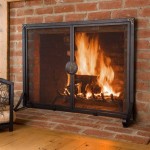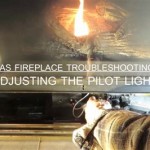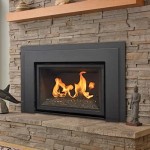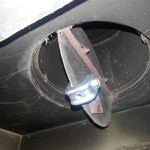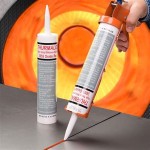Best Wood To Burn In An Indoor Fireplace
Selecting the appropriate wood for indoor fireplace use is paramount for efficiency, safety, and overall enjoyment. The type of wood significantly impacts the heat output, burn time, smoke production, and creosote buildup within the chimney. Utilizing unsuitable wood can lead to inefficient burning, increased risk of chimney fires, and potentially harmful emissions within the home. Therefore, understanding the characteristics of different wood species and their suitability for indoor fireplaces is crucial for homeowners seeking a safe and satisfying fireside experience.
The primary distinction in firewood lies between hardwoods and softwoods. Hardwoods, sourced from deciduous trees, are generally denser than softwoods, which originate from coniferous trees. This density difference translates directly into a longer burn time and higher heat output. However, hardwoods often require a longer seasoning period, the process of drying the wood to reduce its moisture content. Softwoods, while easier to ignite and quicker to burn, produce more smoke and creosote, making them less desirable for frequent indoor use.
The moisture content of firewood is arguably the most critical factor in determining its burn quality. Green or unseasoned wood contains a high percentage of water, which must be evaporated before the wood can effectively burn. This process consumes energy and results in a cooler, smokier fire. Seasoned wood, with a moisture content below 20%, ignites easily, burns cleanly, and produces significantly more heat. Properly seasoned wood will typically be darker in color, lighter in weight, and exhibit cracks in the end grain.
Understanding Hardwoods for Optimal Burning
Hardwoods are widely considered the best choice for indoor fireplaces due to their dense nature and efficient burning properties. They provide a sustained, high-heat fire with minimal smoke production when properly seasoned. Several hardwood species stand out as particularly well-suited for indoor use, each possessing unique characteristics that influence their performance.
Oak is a highly regarded hardwood known for its exceptional density and extended burn time. It produces a significant amount of heat and burns relatively cleanly, making it a popular choice for homeowners seeking a long-lasting and efficient fire. Oak requires a considerable seasoning period, typically ranging from one to two years, to reach optimal moisture levels. Red oak generally takes longer to season than white oak due to its more porous nature.
Maple is another excellent hardwood option, offering a good balance of heat output and burn time. It is easier to ignite than oak and produces a pleasant aroma. Maple also requires seasoning, although it typically dries faster than oak. Sugar maple and red maple are common varieties used for firewood, both providing comparable performance in terms of heat and burn quality.
Ash is a hardwood prized for its easy splitting and relatively short seasoning time. It burns hot and clean, producing minimal smoke when properly dried. Ash is often considered one of the best all-around firewood choices due to its ease of handling and efficient burning properties. White ash and green ash are common species used for firewood, both offering similar performance.
Beech is a dense hardwood that burns similarly to oak, providing a long-lasting and high-heat fire. It can be slightly more difficult to ignite than some other hardwoods but offers excellent overall performance once established. Beech requires a seasoning period comparable to oak to achieve optimal moisture levels.
Birch is a hardwood that ignites easily and burns with a bright flame. It produces a moderate amount of heat and has a shorter burn time compared to oak or maple. Birch is sometimes used as kindling or mixed with other hardwoods to facilitate ignition. It also has a distinctive aroma, making it a popular choice for aesthetic purposes. Black birch and yellow birch are common species used for firewood.
Assessing Softwoods for Occasional Use
While hardwoods are generally preferred for indoor fireplaces, softwoods can be used occasionally, particularly for kindling or in situations where a quick, hot fire is desired. However, it is essential to understand the drawbacks of burning softwoods indoors, including increased smoke production, creosote buildup, and a shorter burn time.
Pine is a common softwood that ignites easily and burns quickly. It produces a significant amount of smoke and creosote, making it less suitable for frequent indoor use. However, pine can be useful for starting fires or adding a quick burst of heat. It is crucial to ensure that pine is thoroughly seasoned before burning to minimize smoke and creosote production. Varieties such as white pine and ponderosa pine are sometimes used.
Fir is another softwood that burns relatively quickly and produces a moderate amount of smoke. It is often used for kindling or in situations where a fast-burning fire is desired. Fir requires seasoning to reduce its moisture content and minimize smoke production. Douglas fir and balsam fir are common species used for firewood.
Spruce is a softwood that burns similarly to fir, producing a moderate amount of smoke and burning relatively quickly. It is sometimes used for kindling or mixed with hardwoods to facilitate ignition. Spruce requires seasoning to reduce its moisture content. Types such as white spruce and Norway spruce are occasional choices for firewood.
Cedar is a softwood known for its aromatic properties and resistance to decay. It burns relatively quickly and produces a moderate amount of smoke. Cedar is often used for outdoor fires or in specialized fireplaces designed for aromatic woods. It is not typically recommended for frequent indoor use due to its smoke production and potential for creosote buildup. Types such as western red cedar and eastern red cedar are available. Burning cedar indoors can also release oils that could trigger allergic reactions in some individuals.
Key Considerations for Firewood Selection and Safety
In addition to choosing the right type of wood, several other factors are crucial for ensuring a safe and efficient fireside experience. These include proper seasoning, safe storage practices, and regular chimney maintenance. Neglecting these aspects can significantly increase the risk of chimney fires and other hazards.
The seasoning process is essential for reducing the moisture content of firewood to an acceptable level. Properly seasoned wood will ignite easily, burn cleanly, and produce significantly more heat than green or unseasoned wood. The seasoning time varies depending on the type of wood and the local climate. Hardwoods typically require a longer seasoning period than softwoods. Wood should be split, stacked loosely, and exposed to sunlight and wind to facilitate drying. Covering the top of the woodpile can help prevent rain from soaking the wood, while allowing air to circulate underneath.
Safe storage practices are vital for preventing pest infestations and minimizing the risk of fire hazards. Firewood should be stored away from the house to prevent termites and other pests from entering the building. A minimum distance of 20 feet is recommended. Woodpiles should be stacked in a stable manner to prevent them from collapsing. Avoid storing firewood directly on the ground, as this can promote moisture absorption and decay. Using a raised platform or pallets can help improve air circulation and keep the wood dry.
Regular chimney maintenance is critical for preventing chimney fires and ensuring the safe operation of the fireplace. Creosote, a flammable byproduct of burning wood, can accumulate on the inner walls of the chimney. If creosote buildup becomes excessive, it can ignite and cause a dangerous chimney fire. The chimney should be inspected and cleaned annually by a qualified chimney sweep. The frequency of cleaning may need to be increased depending on the amount of wood burned and the type of wood used. Using seasoned wood and burning efficiently can help minimize creosote buildup.
Furthermore, it is essential to use a fireplace screen to prevent sparks and embers from escaping into the room. Keep flammable materials away from the fireplace, including curtains, furniture, and rugs. Never leave a fire unattended and ensure that it is completely extinguished before leaving the house or going to bed. Install and maintain smoke detectors and carbon monoxide detectors to provide early warning of potential hazards.
By carefully selecting the appropriate wood, properly seasoning it, storing it safely, and maintaining the chimney regularly, homeowners can enjoy a safe, efficient, and satisfying fireside experience. Understanding the characteristics of different wood species and adhering to safety guidelines are essential for maximizing the benefits and minimizing the risks associated with indoor fireplace use.

What Is The Best Wood To Burn In Your Fireplace Does It Matter

The Best And Worst Types Of Wood For Burning In Fireplace Bob Vila

A Guide To Choosing The Best Indoor Fireplace Increase Comfort

Best And Worst Woods For Fireplaces

The Best Kinds Of Wood For Indoor Fireplaces And A Few To Never Burn Indoors Manual

What Is The Best Wood For Fireplace Comfort All Winter Long

The Best Wood Burning Fireplace Inserts Or Stoves Ecohome

A Guide To Choosing The Best Indoor Fireplace Increase Comfort

6 Things You Should Never Burn In Your Fireplace

The Best And Worst Types Of Wood For Your Burning Fireplace Dreifuss Fireplaces
Related Posts

